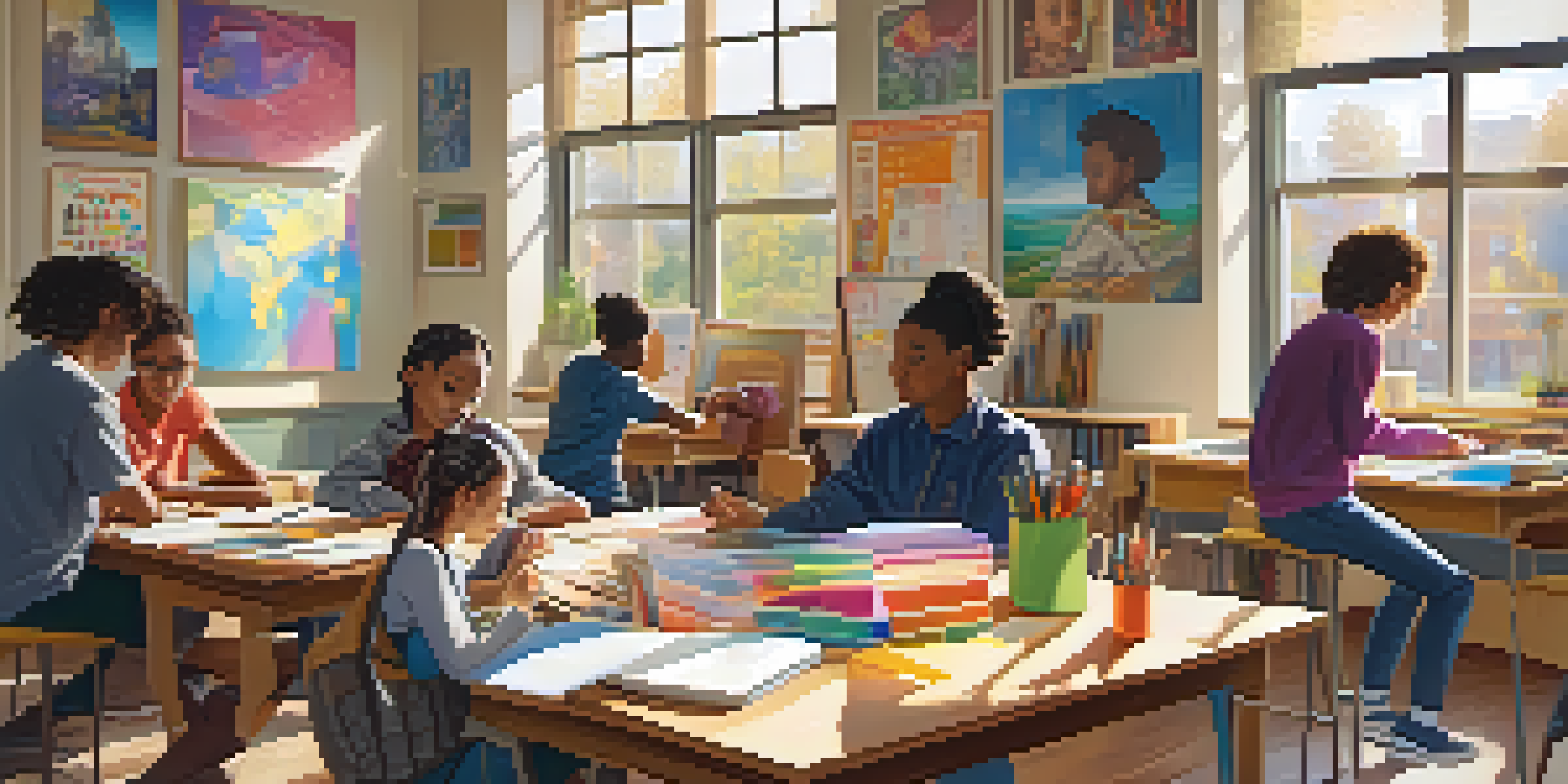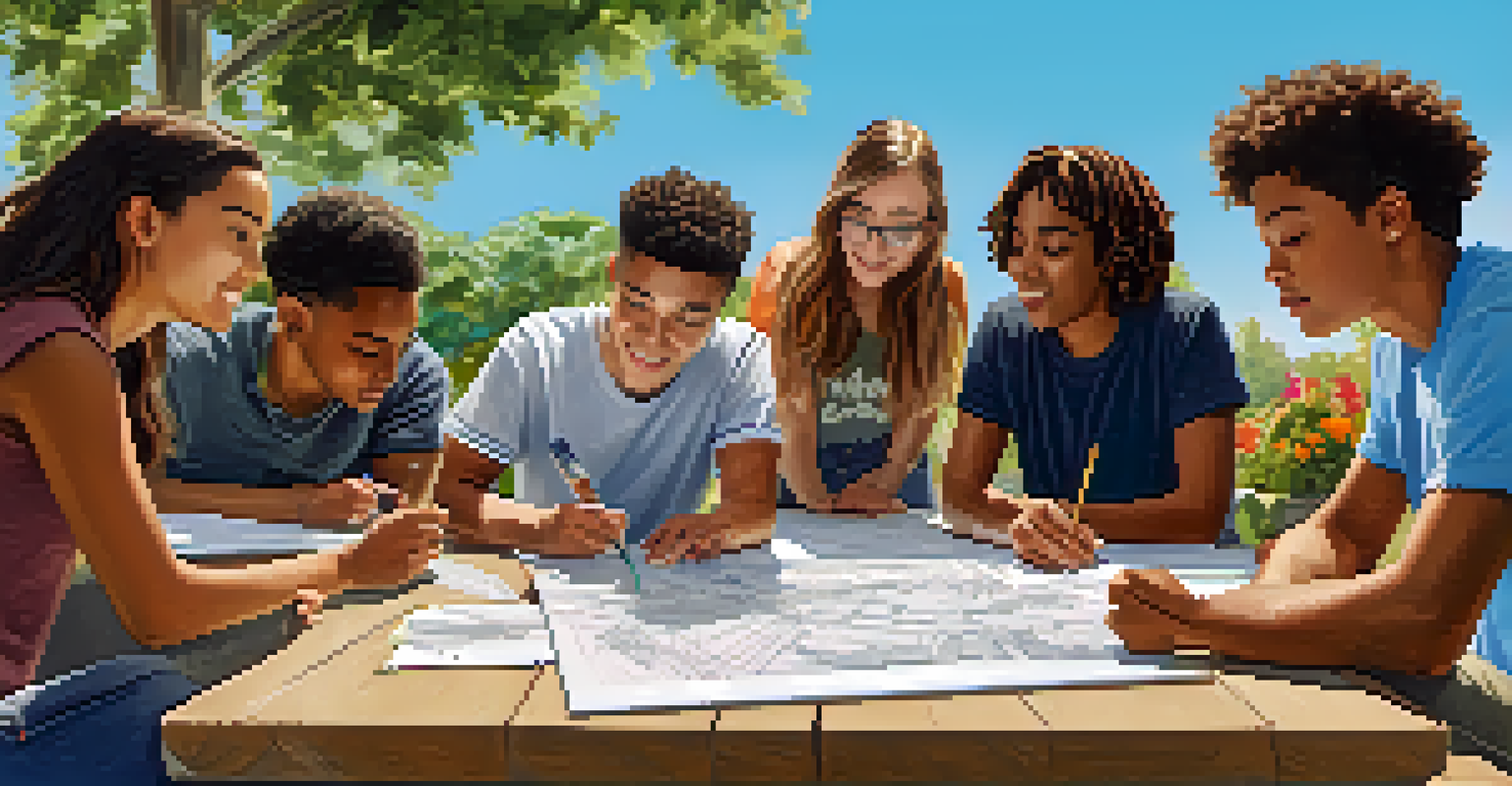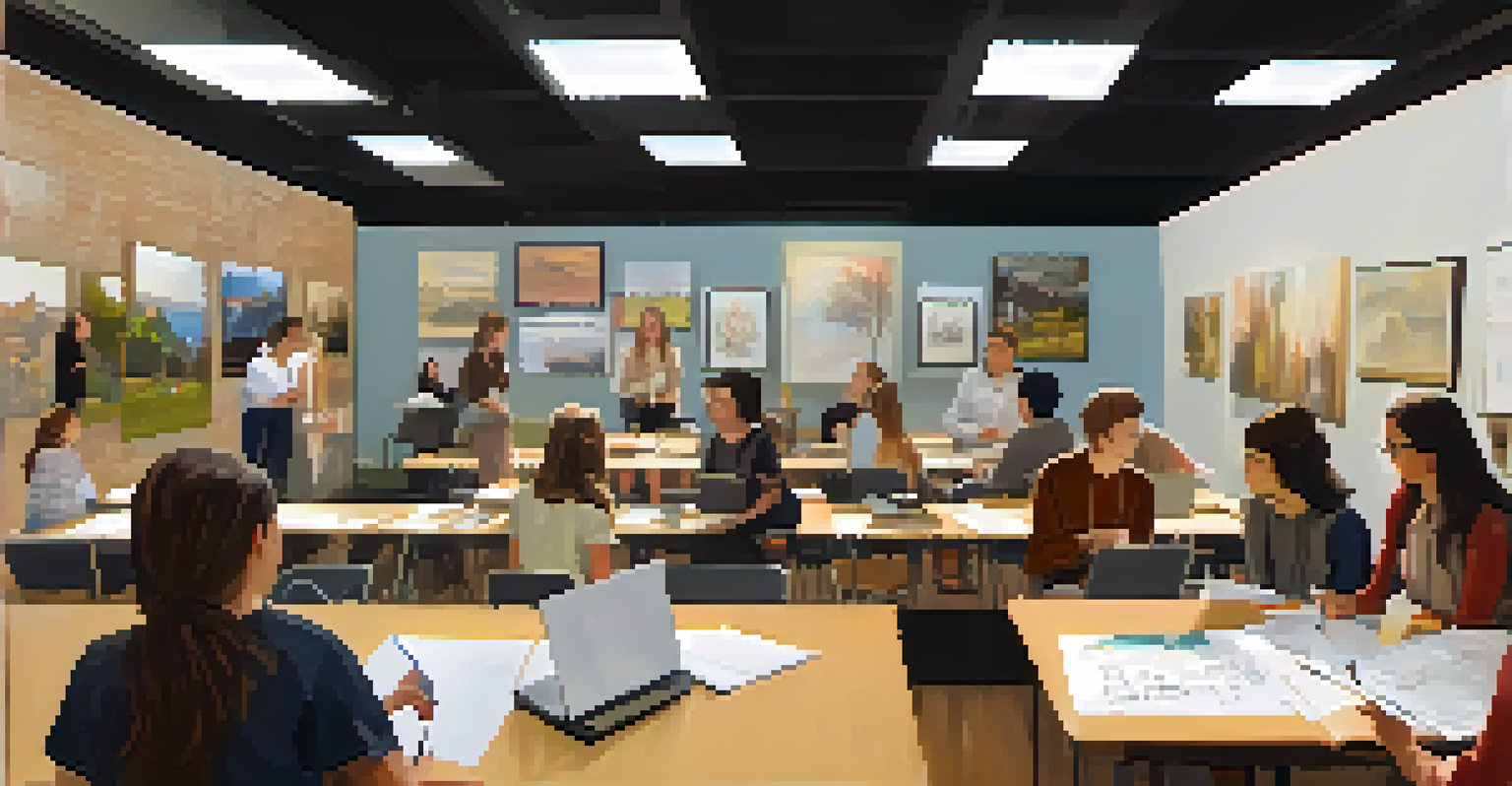Exploring the Link Between Collaboration and Student Motivation

Understanding Student Motivation in Collaborative Settings
Student motivation is a key driver of educational success, and it can be significantly influenced by collaborative learning environments. When students work together, they often feel a sense of accountability not just to themselves but to their peers. This shared responsibility can spark enthusiasm and a desire to contribute, enhancing their overall engagement in the learning process.
Alone we can do so little; together we can do so much.
Moreover, collaboration allows students to share diverse perspectives, which can deepen their understanding of the material. For instance, a group project on climate change might expose students to various viewpoints, prompting richer discussions and insights. This collaborative exchange fosters a sense of community, making students feel less isolated in their learning journey.
In essence, when students feel connected to their peers through collaboration, their intrinsic motivation can flourish. They become more invested in their education, as the learning experience transforms from a solitary task into a shared adventure.
The Role of Trust and Safety in Collaboration
For collaboration to thrive, students need to feel safe and supported within their group. Trust is a fundamental aspect of any collaborative effort; it allows students to share ideas without fear of judgment. When students believe their contributions are valued, they are more likely to engage actively and take risks in their learning.

Creating a safe environment can involve establishing clear communication norms and encouraging respect among group members. Teachers play a crucial role in modeling this behavior, demonstrating how to listen actively and respond constructively. When students witness these practices, they are more likely to replicate them within their groups.
Collaboration Boosts Student Motivation
When students work together, they feel a sense of accountability to their peers, which enhances their engagement in the learning process.
Ultimately, a trust-filled environment not only enhances collaboration but also boosts motivation. When students feel secure, they are more likely to express their thoughts and invest emotionally in group tasks, leading to a more enriching educational experience.
Setting Clear Goals for Collaborative Projects
Having clear, shared goals is essential in any collaborative project, as it provides direction and purpose. When students understand what they are working towards, they can align their efforts, leading to a more cohesive and motivated group dynamic. For example, a project aimed at creating a community garden can unite students under a common vision, fueling their enthusiasm for the task.
Collaboration allows us to know more than we are capable of knowing by ourselves.
Moreover, setting specific roles within the group can enhance accountability, making each member feel their contributions matter. When students know who is responsible for what, they are less likely to slack off, as they want to support their classmates. This clear structure can help prevent misunderstandings and keep motivation levels high.
In short, establishing clear goals and roles not only clarifies expectations but also encourages students to collaborate more effectively. When everyone knows their part, the collective motivation increases, making the learning experience more enjoyable.
The Impact of Peer Feedback on Motivation
Peer feedback is a powerful tool in collaborative learning, as it can significantly boost student motivation. When students receive constructive criticism from their peers, they often feel more motivated to improve their work than when feedback comes solely from teachers. This reciprocal feedback loop fosters a growth mindset, where students view challenges as opportunities for development.
In a collaborative setting, students can learn from each other's strengths and weaknesses. For instance, a student who excels in writing can help peers refine their essays, while others might assist with research skills. This exchange not only enhances individual skills but also cultivates a supportive learning environment where everyone is invested in each other's success.
Trust is Essential for Teamwork
A safe and trusting environment allows students to share ideas without fear of judgment, fostering active participation and emotional investment.
Thus, encouraging regular peer feedback can create a culture of motivation and improvement. Students become more engaged when they know their peers are actively supporting their learning journey.
Fostering Creativity through Collaboration
Collaboration naturally encourages creativity, as it brings together diverse ideas and perspectives. When students brainstorm and build on each other's thoughts, they often arrive at innovative solutions and projects that they may not have considered individually. This collective creativity can make learning more exciting and spark a genuine interest in the subject matter.
For instance, a group tasked with designing a marketing campaign might generate a wealth of unique ideas, each contributing to a richer final product. This not only makes the project more enjoyable but also reinforces the idea that collaboration can lead to greater achievements than working alone.
By fostering an environment where creativity thrives through collaboration, educators can significantly enhance student motivation. When students see the tangible results of their teamwork, they are motivated to continue exploring and pushing their creative boundaries.
The Benefits of Diverse Group Dynamics
Diversity in group dynamics can be a game-changer in collaborative learning environments. When students from different backgrounds and experiences come together, they bring unique perspectives that can enrich discussions and problem-solving. This diversity can lead to more innovative ideas and solutions, ultimately enhancing the learning experience.
For example, a group composed of students from various cultural backgrounds might approach a historical project with a wider range of viewpoints. This not only broadens their understanding of the topic but also promotes empathy and respect among peers, which is crucial for building a strong collaborative spirit.
Diversity Enriches Learning Experiences
Bringing together students from diverse backgrounds leads to richer discussions and innovative solutions, enhancing motivation and empathy.
In essence, embracing diverse group dynamics not only fosters a sense of belonging but also keeps students motivated. They become more engaged when they can share and learn from each other's experiences, creating a richer educational environment.
Real-World Applications of Collaborative Learning
One of the most compelling aspects of collaborative learning is its relevance to real-world scenarios. Many professions require teamwork and collaboration, so practicing these skills in an educational setting prepares students for future success. When students engage in collaborative projects, they gain valuable experience that translates directly to the workplace.
For instance, a group project simulating a business startup can teach students about roles, responsibilities, and the importance of communication in achieving a common goal. This hands-on experience not only makes learning more engaging but also helps students see the practical benefits of their education.

By incorporating real-world applications into collaborative learning, educators can significantly enhance student motivation. When students recognize the relevance of what they are learning, they are more likely to be invested in their education, leading to deeper understanding and retention.